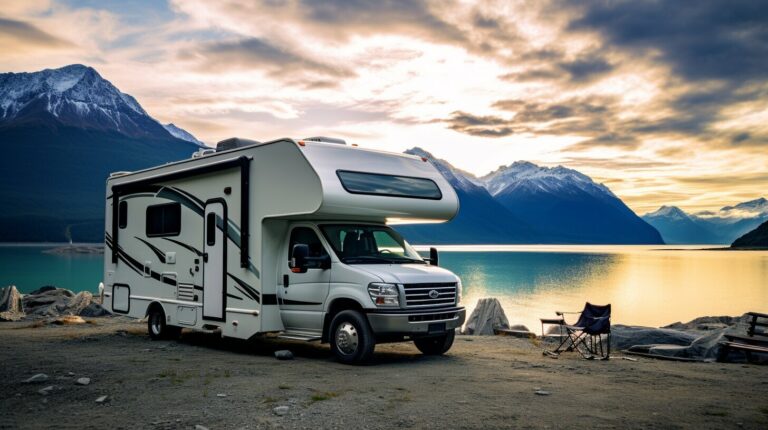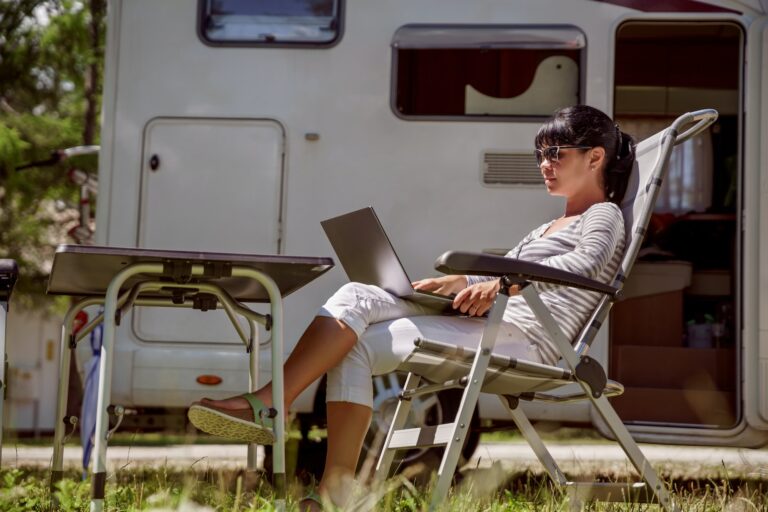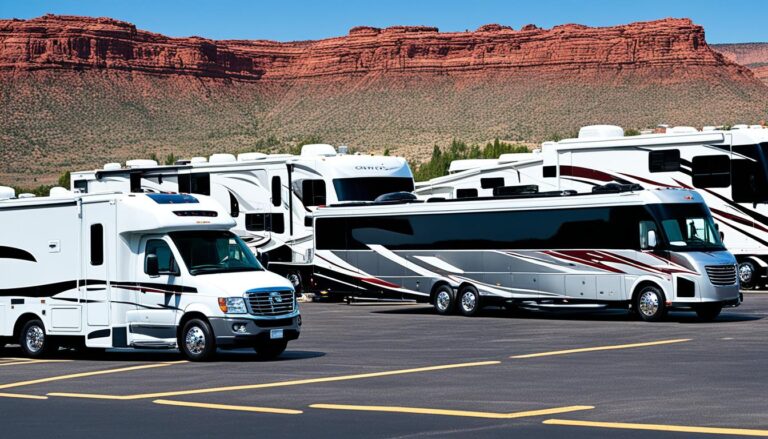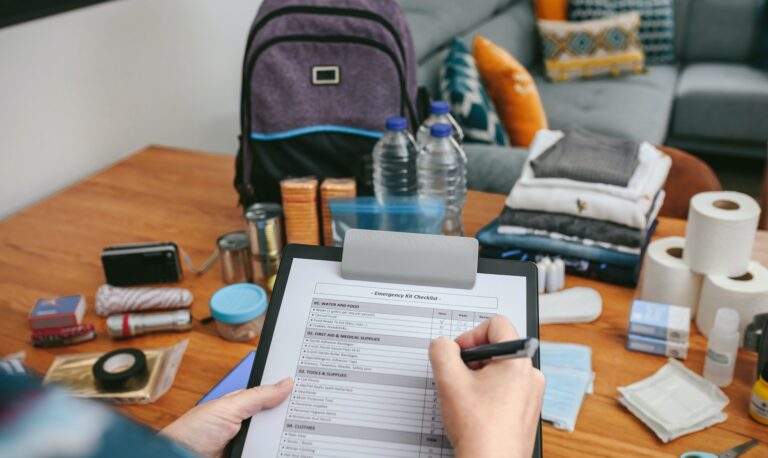Owning an RV is an exciting adventure that offers a unique way to travel and explore the great outdoors. However, with the freedom and flexibility of RVing comes the responsibility of maintaining your home on wheels. Proper RV maintenance is crucial to ensure a safe, comfortable, and enjoyable experience on the road. In this comprehensive guide, we’ll provide beginners with practical tips and advice on how to keep your RV in top shape.
Table of Contents
- Understanding Your RV
- Routine RV Maintenance
- Inspecting Your RV
- RV Tires and Brakes
- RV Appliances and Systems
- Maintaining Your RV’s Exterior
1. Understanding Your RV
Before diving into RV maintenance, it’s essential to understand the various components and systems that make up your RV. Familiarize yourself with your RV’s owner’s manual, which will provide detailed information about your specific make and model. The manual will typically include instructions for routine maintenance, as well as troubleshooting tips for common issues.
Key RV Components to Know:
- Chassis: The frame that supports the body and engine of your RV.
- Engine: The power source that propels your RV down the road.
- Drive Train: The system that transfers power from the engine to the wheels.
- Suspension: The system that absorbs road shocks and provides a smooth ride.
- Brakes: The system that slows and stops your RV.
- Electrical System: The wiring and components that provide power to your RV’s lights, appliances, and accessories.
- Plumbing System: The system that provides fresh water, waste water, and propane to your RV’s appliances and fixtures.
- Heating, Ventilation, and Air Conditioning (HVAC): The system that controls the temperature and air quality inside your RV.
- Tires: The rubber components that provide traction and support the weight of your RV.
2. Routine RV Maintenance
To keep your RV running smoothly and minimize the risk of breakdowns, it’s important to perform routine maintenance tasks. Some of the most common tasks include:
- Change the Engine Oil and Filter: Regular oil changes are vital to keep your RV’s engine running smoothly and efficiently. The frequency of oil changes will depend on your RV’s engine type and manufacturer recommendations, typically ranging from 3,000 to 7,500 miles.
- Check and Replace Fluids: In addition to engine oil, your RV relies on various other fluids, such as coolant, brake fluid, power steering fluid, and transmission fluid. Check these fluids regularly and top them off or replace them as needed, following the guidelines in your owner’s manual.
- Inspect and Replace Belts and Hoses: Belts and hoses are critical components that can wear out over time. Regularly inspect them for signs of wear or damage, and replace them as necessary to prevent breakdowns.
- Replace Air and Fuel Filters: Clogged air and fuel filters can lead to decreased engine performance and reduced fuel efficiency. Change these filters according to the manufacturer’s recommendations in your owner’s manual.
- Perform Regular Battery Maintenance: RV batteries require regular maintenance to ensure they hold a charge and provide power when needed. Check the battery’s electrolyte levels, clean the terminals, and keep the battery fully charged when not in use.
3. Inspecting Your RV
Conducting regular inspections of your RV can help identify potential issues before they become major problems. Here are some areas to focus on during your inspections:
- Check for Water Leaks: Water leaks can cause significant damage to your RV’s interior and structure. Inspect the roof, windows, and doors for signs of leaks and reseal or repair any problem areas as needed.
- Inspect the Roof: Regularly inspect your RV’s roof for damage, such as cracks, punctures, or peeling sealant. Address any issues promptly to prevent water intrusion and structural damage.
- Check the Seals and Gaskets: Examine the seals and gaskets around your RV’s doors, windows, and vents to ensure they are in good condition and providing a proper seal. Replace any damaged or deteriorated seals as needed.
- Examine the Undercarriage: Inspect the undercarriage of your RV for signs of damage or wear, such as rust, cracks, or loose components. Repair or replace any damaged parts as necessary.
- Test the Safety Equipment: Regularly test your RV’s safety equipment, such as smoke detectors, carbon monoxide detectors, fire extinguishers, and propane leak detectors, to ensure theyare functioning properly. Replace batteries and expired equipment as needed.
4. RV Tires and Brakes
Tires and brakes are crucial components that directly impact your RV’s safety and performance on the road. Proper maintenance of these systems is essential for a smooth and safe journey.
Tire Maintenance Tips:
- Check Tire Pressure: Underinflated or overinflated tires can lead to poor handling, reduced fuel efficiency, and increased tire wear. Regularly check your RV’s tire pressure and adjust it according to the manufacturer’s recommendations.
- Inspect Tires for Damage: Routinely examine your RV’s tires for signs of damage, such as cuts, cracks, or bulges. Replace any damaged tires immediately to prevent blowouts.
- Rotate Tires: Rotating your RV’s tires helps ensure even tire wear and extends their lifespan. Follow the rotation schedule outlined in your owner’s manual.
- Check Wheel Alignment: Improper wheel alignment can lead to uneven tire wear and poor handling. If you notice uneven tire wear or your RV pulling to one side, have your wheel alignment checked and adjusted by a professional.
Brake Maintenance Tips:
- Inspect Brake Pads and Rotors: Regularly check your RV’s brake pads and rotors for signs of wear or damage. Replace worn or damaged components as needed to maintain optimal braking performance.
- Check Brake Fluid: Low or contaminated brake fluid can result in reduced braking performance. Inspect your RV’s brake fluid level and condition, topping off or replacing it as needed.
- Flush Brake System: Over time, brake fluid can absorb moisture, which can lead to corrosion and compromised braking performance. Flush your RV’s brake system periodically to remove any contaminants and maintain optimal performance.
5. RV Appliances and Systems
Keeping your RV’s appliances and systems in good working order is essential for a comfortable and enjoyable camping experience. Here are some tips for maintaining these components:
- Clean and Sanitize the Fresh Water System: Regularly clean and sanitize your RV’s fresh water system to prevent the growth of bacteria and algae. This includes draining and flushing the water tank, sanitizing the water lines, and using a water filter to remove impurities.
- Maintain the Waste Water System: Proper maintenance of your RV’s waste water system helps prevent unpleasant odors and potential damage. This includes regularly emptying and cleaning the black and gray water tanks, using appropriate tank treatment chemicals, and inspecting the system for leaks or damage.
- Check the Propane System: Inspect your RV’s propane system for leaks, damage, or loose connections. Ensure that propane tanks are properly secured and filled, and that all propane appliances are functioning correctly.
- Clean and Maintain Appliances: Keep your RV’s appliances clean and well-maintained, following the manufacturer’s recommendations for each appliance. This includes cleaning the refrigerator coils, inspecting and cleaning the air conditioner filter, and descaling the water heater.
6. Maintaining Your RV’s Exterior
Your RV’s exterior is exposed to the elements and can suffer from wear and tear over time. Regular maintenance can help prevent damage and keep your RV looking its best.
Exterior Maintenance Tips:
- Wash Your RV: Regularly wash your RV’s exterior to remove dirt, grime, and road salts that can cause damage to the paint and finish. Use a gentle, RV-specific soap and soft-bristle brush to avoid scratching or damaging the surface.
- Inspect and Repair Caulking and Sealants: Inspect your RV’s exterior caulking and sealants for signs of cracking, peeling, or damage. Repair or replace any damaged sealants to ensure a watertight seal and prevent water intrusion.
- Protect the Exterior from UV Damage: Prolonged exposure to UV rays can cause your RV’s exterior to fade or become damaged. Use an RV cover or store your RV under a shelter when not in use to minimize UV exposure.
- Lubricate Slide-Outs and Hinges: Keep your RV’s slide-outs, hinges, and other moving components well-lubricated to ensure smooth operation and prevent wear. Use a high-quality lubricant designed for RVs and follow the manufacturer’s recommendations for application.
By following these practical maintenance tips, you’ll be well on your way to keeping your home on wheels in top shape. Regular RV maintenance not only ensures a safe and enjoyable travel experience but also helps protect your investment for years to come. Happy RVing!






